Fiat 600 vs Hyundai IONIQ 5 – Which one offers the better deal?
Two cars, one duel: Fiat 600 meets Hyundai IONIQ 5.
Which one wins in performance, efficiency and value for money? Find out now!
Costs and Efficiency: Price and efficiency are often the first things buyers look at. Here it becomes clear which model has the long-term edge – whether at the pump, the plug, or in purchase price.
Fiat 600 has a clearly advantage in terms of price – it starts at 21800 £, while the Hyundai IONIQ 5 costs 38500 £. That’s a price difference of around 16637 £.
In terms of energy consumption, the advantage goes to the Fiat 600: with 15.10 kWh per 100 km, it’s slight more efficient than the Hyundai IONIQ 5 with 15.60 kWh. That’s a difference of about 0.50 kWh.
As for range, the Hyundai IONIQ 5 performs evident better – achieving up to 570 km, about 161 km more than the Fiat 600.
Engine and Performance: Under the bonnet, it becomes clear which model is tuned for sportiness and which one takes the lead when you hit the accelerator.
When it comes to engine power, the Hyundai IONIQ 5 has a clearly edge – offering 650 HP compared to 156 HP. That’s roughly 494 HP more horsepower.
In acceleration from 0 to 100 km/h, the Hyundai IONIQ 5 is clearly quicker – completing the sprint in 3.50 s, while the Fiat 600 takes 8.50 s. That’s about 5 s faster.
In terms of top speed, the Hyundai IONIQ 5 performs distinct better – reaching 260 km/h, while the Fiat 600 tops out at 200 km/h. The difference is around 60 km/h.
There’s also a difference in torque: Hyundai IONIQ 5 pulls decisively stronger with 770 Nm compared to 260 Nm. That’s about 510 Nm difference.
Space and Everyday Use: Whether family car or daily driver – which one offers more room, flexibility and comfort?
Both vehicles offer seating for 5 people.
In curb weight, Fiat 600 is significantly lighter – 1355 kg compared to 1955 kg. The difference is around 600 kg.
In terms of boot space, the Hyundai IONIQ 5 offers evident more room – 520 L compared to 385 L. That’s a difference of about 135 L.
In maximum load capacity, the Hyundai IONIQ 5 performs clearly perceptible better – up to 1580 L, which is about 324 L more than the Fiat 600.
When it comes to payload, Hyundai IONIQ 5 a bit takes the win – 530 kg compared to 430 kg. That’s a difference of about 100 kg.
Who comes out on top?
Overall, the Hyundai IONIQ 5 shows itself to be dominates this comparison and secures the title of DriveDuel Champion.
It convinces with the more balanced overall package and proves to be the more versatile choice for everyday use.
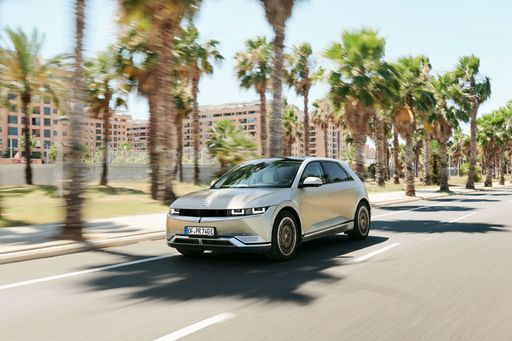
Hyundai IONIQ 5
Fiat 600
The Fiat 600 is a compact city car that embodies the essence of Italian design and practicality. Renowned for its nimble handling and efficient use of space, it offers an enjoyable driving experience for urban commuters. With its classic charm and modern updates, the Fiat 600 remains a beloved choice for those seeking style and functionality in a small package.
details
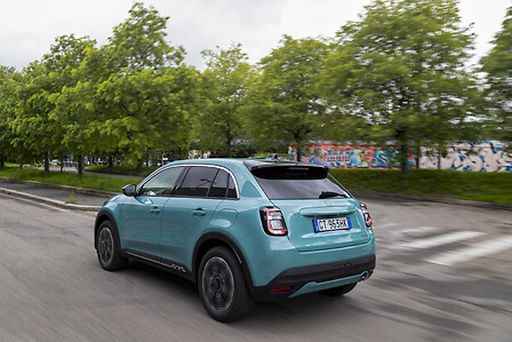
Hyundai IONIQ 5
The Hyundai IONIQ 5 showcases a bold and futuristic design that captures attention with its striking facade and sharp lines. This electric vehicle offers an impressive blend of performance and efficiency, making it a compelling choice for environmentally conscious drivers. Inside, the spacious and tech-forward interior provides a comfortable and engaging driving experience for both driver and passengers.
details @ hyundai.news
@ hyundai.news
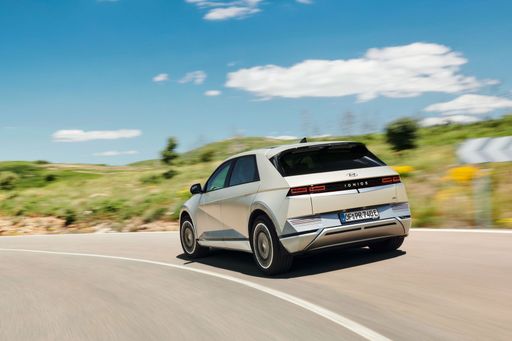 @ hyundai.news
@ hyundai.news
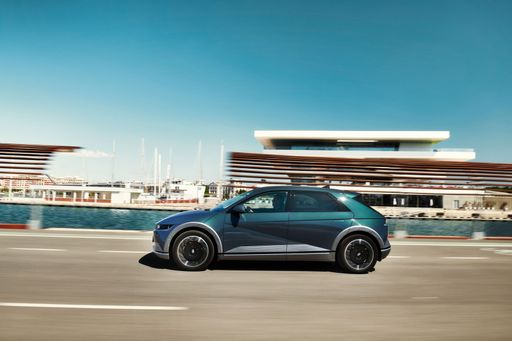 @ hyundai.news
@ hyundai.news
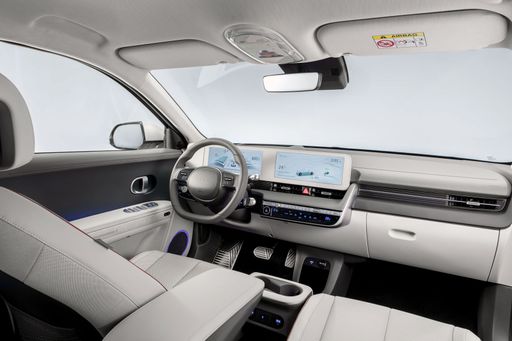 @ hyundai.news
@ hyundai.news
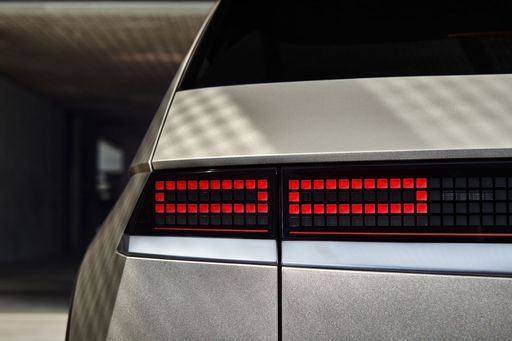 @ hyundai.news
@ hyundai.news

|

|
|
|
|
Costs and Consumption |
|
|---|---|
|
Price
21800 - 31300 £
|
Price
38500 - 64200 £
|
|
Consumption L/100km
4.80 L
|
Consumption L/100km
-
|
|
Consumption kWh/100km
15.10 kWh
|
Consumption kWh/100km
15.6 - 21.2 kWh
|
|
Electric Range
409 km
|
Electric Range
440 - 570 km
|
|
Battery Capacity
51 - 52 kWh
|
Battery Capacity
63 - 84 kWh
|
|
co2
0 - 109 g/km
|
co2
0 g/km
|
|
Fuel tank capacity
44 L
|
Fuel tank capacity
-
|
Dimensions and Body |
|
|---|---|
|
Body Type
SUV
|
Body Type
SUV
|
|
Seats
5
|
Seats
5
|
|
Doors
5
|
Doors
5
|
|
Curb weight
1355 - 1595 kg
|
Curb weight
1955 - 2275 kg
|
|
Trunk capacity
360 - 385 L
|
Trunk capacity
480 - 520 L
|
|
Length
4178 mm
|
Length
4655 - 4715 mm
|
|
Width
1779 mm
|
Width
1890 - 1940 mm
|
|
Height
1523 - 1525 mm
|
Height
1585 - 1605 mm
|
|
Max trunk capacity
1231 - 1256 L
|
Max trunk capacity
1540 - 1580 L
|
|
Payload
427 - 430 kg
|
Payload
385 - 530 kg
|
Engine and Performance |
|
|---|---|
|
Engine Type
Electric, Petrol MHEV
|
Engine Type
Electric
|
|
Transmission
Automatic
|
Transmission
Automatic
|
|
Transmission Detail
Reduction Gearbox, Dual-Clutch Automatic
|
Transmission Detail
Reduction Gearbox
|
|
Drive Type
Front-Wheel Drive
|
Drive Type
Rear-Wheel Drive, All-Wheel Drive
|
|
Power HP
110 - 156 HP
|
Power HP
170 - 650 HP
|
|
Acceleration 0-100km/h
8.5 - 10.5 s
|
Acceleration 0-100km/h
3.5 - 8.5 s
|
|
Max Speed
150 - 200 km/h
|
Max Speed
185 - 260 km/h
|
|
Torque
205 - 260 Nm
|
Torque
350 - 770 Nm
|
|
Number of Cylinders
3
|
Number of Cylinders
-
|
|
Power kW
81 - 115 kW
|
Power kW
125 - 478 kW
|
|
Engine capacity
1199 cm3
|
Engine capacity
-
|
General |
|
|---|---|
|
Model Year
2023 - 2025
|
Model Year
2024
|
|
CO2 Efficiency Class
A, C
|
CO2 Efficiency Class
A
|
|
Brand
Fiat
|
Brand
Hyundai
|
What drive types are available for the Fiat 600?
The Fiat 600 is available as Front-Wheel Drive.
The prices and data displayed are estimates based on German list prices and may vary by country. This information is not legally binding.
